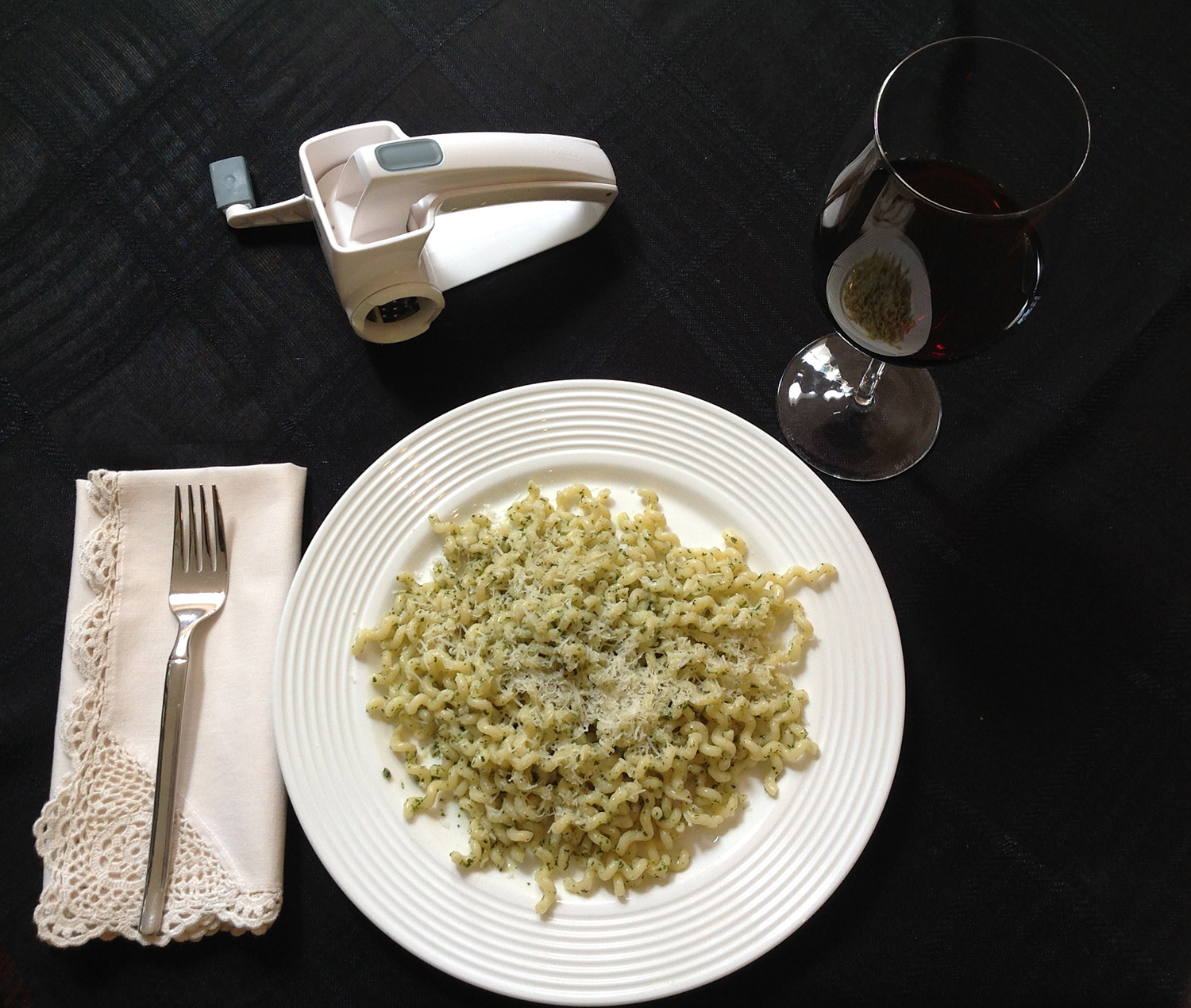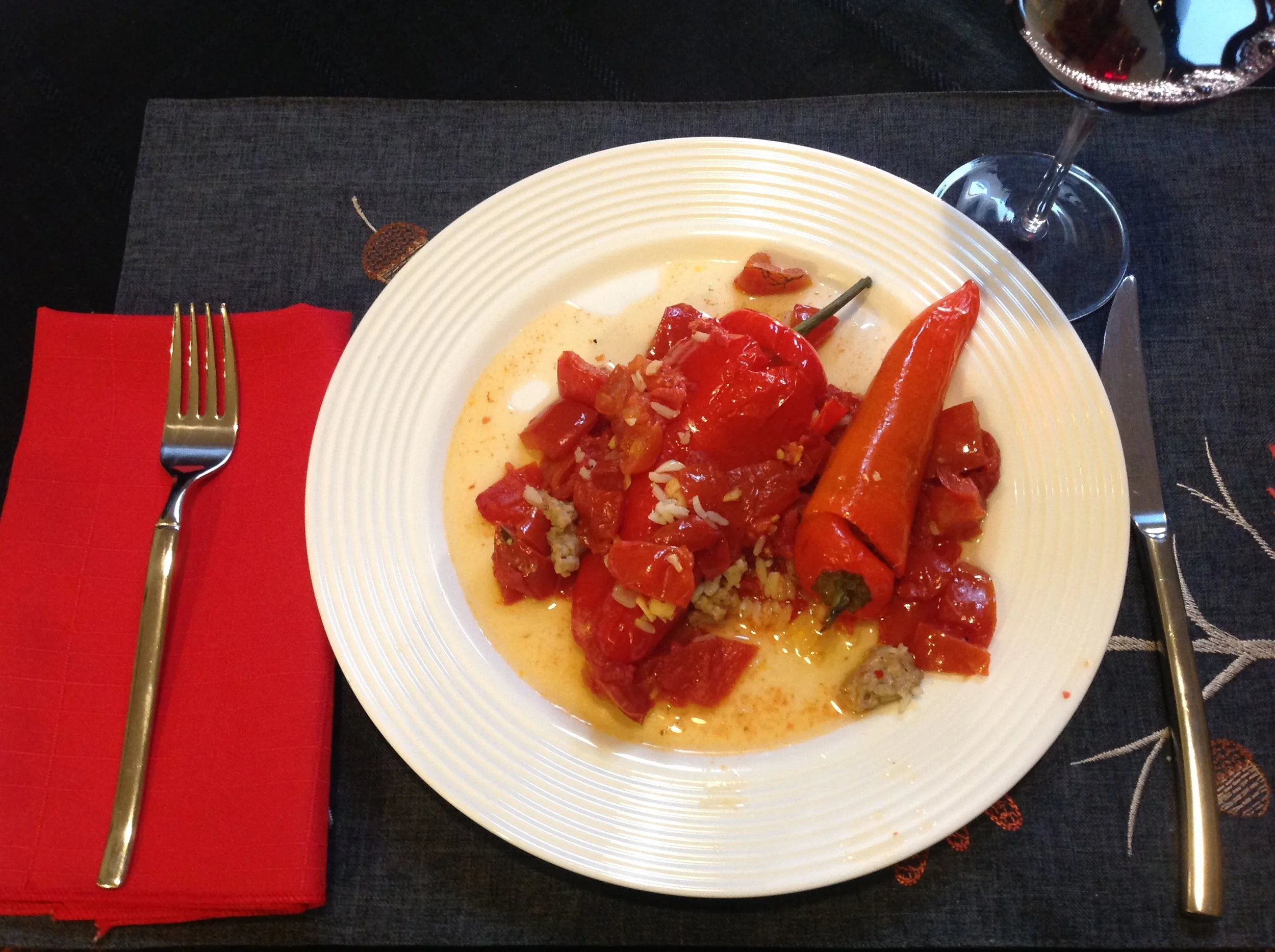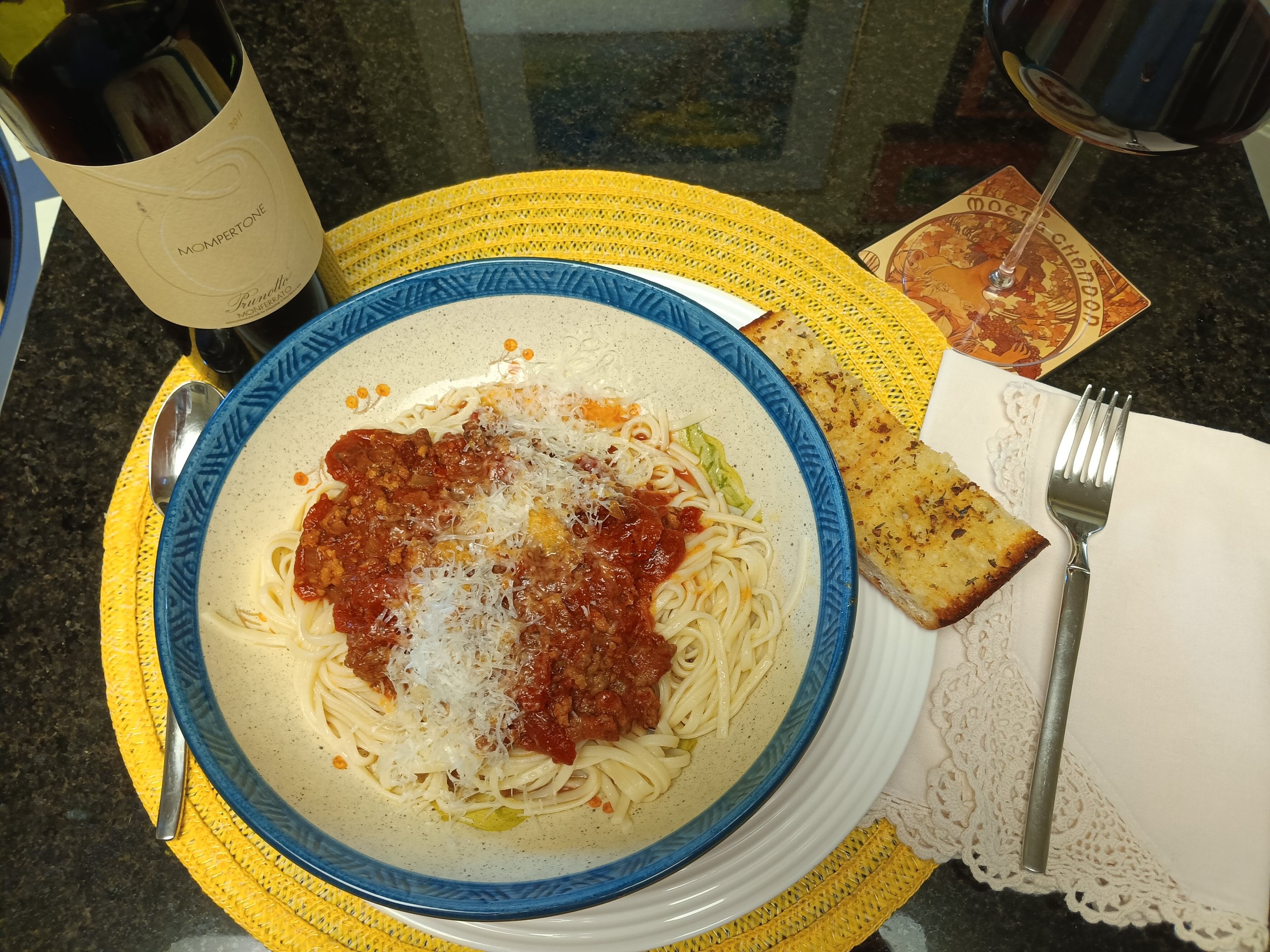Presto! E A S Y Garden Pesto

Presto! E A S Y Garden Pesto
Always brings fond memories
I always remember the smell of my grandmother’s kitchen. Basil was the overriding smell with hints of tomato, garlic and cheese. She was the master of understatement in the kitchen. I was just a little kid and assumed she had some kind of special secret spices that my mother didn’t have. In reality, my grandmother (born and raised on the Isolo de Ponza) had a far less complex cupboard, but, knew how to create the perfect balance in everything she made. I vividly remember one time when she and my grandfather were staying with us in Detroit (to see the new baby, my sister Judy) and my grandmother cooked artichokes. The flavor was like nothing I’d ever tasted. She had stuffed them with something that just filled our house with the same smells that permeated her house. I insisted that she give my mother the recipe to which she gestured to my mother that you “jista poota leeeta cheese”. Knowing my grandmother did not drive and we had no Italian grocers in our neighborhood, whatever she put into those artichokes, she would have found in my mother’s refrigerator. It stayed a mystery to me and my late mother.
UPDATE: At a recent family reunion, my cousin, Dennis Clements, gave me a CD of his late mother Delores, known as “Dolly” to friends and family, cooking in her own kitchen. And, lo and behold, on the third track was none other than an old family recipe for stuffed artichokes. I love the way his mom handles the artichokes and the other ingredients. It is quite obvious that she could stuff artichokes in her sleep. Her “recipe” is, indeed, my grandmother’s secret stuffed artichoke process. I’ve highlighted ingredients rather than offer a separate ingredient list. It is just too simple.
DOLLY’S STUFFED ARTICHOKES (makes two)
First of all, trim the tough leaves off of each artichoke near the bottom, cut off and save the stem so the artichoke sits flat and if needed, trim down any thorn tipped leaves. Chop off the entire top about an inch from the tip. Grip the artichoke firmly in the palm of your hand and slam it down on the counter, top first, giving it a real whack. That will loosen it up so that with your thumbs you cam make a nest in the middle. No need to remove the choke at this point. Fill a pot about with about 2-3 inches of cold salted water. Wash your hands. In a bowl, press three or four large garlic cloves with a garlic press into the bowl. Toss the remains of the garlic in the press into the pot of water along with the artichoke stems*. Tear off a large chunk, bigger than a fist, of firm Italian bread and run cold water over it. Squeeze out all the water and tear it into small pieces and put that in the bowl with the garlic. Add salt, parsley and parmesan cheese. Stuff the chokes with the bread mixture and place them in the pot so that they are not submerged but just about half in and about half out of the water. Drizzle olive oil over them and cook covered for about an hour and a half. Do not boil hard, just a gentle boil or you might run out of water and burn them. Serve with salt and pepper. The flavor of the stuffing is what I remember from my grandmother’s visit to Detroit around 1960.
*I also found that if your artichokes are big plump devils, you can peel the stems and they are soft and delicious after an hour and a half of cooking. Also, we like to serve our artichokes with melted butter in which to dip the leaves before scraping them with your teeth. I noticed that after an hour and a half, the core is so soft that when you get to the final interior leaves, the choke simply comes right out with the last few leaves and can be discarded leaving a nice big succulent core that melts in your mouth.
RETURNING TO ORIGINAL TEXT : Probably because I always associate basil with my grandmother, I have a real fondness for pesto. Italian chefs that I attempt to emulate always cook simple food by simple processes with very few ingredients. My wife Alice normally makes pesto with basil and arugula and/or sorrel. By midsummer, our spice garden is always teeming with a lifetime supply of just about all of the spices we normally use. So, I was looking at the normal pesto recipe and wondered what would happen if one put every green leafy herb in the garden into it. So, I made a couple of tweaks to the “Simply Recipes” Fresh Basil Pesto recipe that I found on line and added the following in roughly the quantities listed below. What this hodge podge of green herbs shows me is that as long as you have enough basil to provide a base, there isn’t anything that can mess up pesto and the more the merrier, actually. Other than the lemon juice and all the extra green herbs, the basic recipe is that which I found on line from “Simply Recipes”.
EASY Garden Pesto
Basil pesto darkens when exposed to air, so to store, cover tightly with plastic wrap making sure the plastic is touching the top of the pesto and not allowing the pesto to have contact with air. The pesto will stay greener longer that way. To freeze it, put it in an ice cube tray. When the pesto cubes are frozen, put them in a vacuum storage bag so they are not touching each other so you can pull out one at a time.
INGREDIENTS
2 cups fresh basil leaves, packed (can substitute half the basil leaves with baby spinach) I used a cup of basil leaves along with about a half cup each of arugula and lemon basil, about a quarter cup of sorrel and mint, then less than a quarter cup each of parsley, cilantro, thyme, rosemary, sage, tarragon, garlic chives and regular chives
½ cup freshly grated Romano –Parmesan or Parmigiano-Reggiano cheese (about 2 ounces)
½ cup extra virgin olive oil
1/3 cup pine nuts (can sub or include chopped walnuts)
2 tbs. lemon juice
3 garlic cloves, minced (about 3 teaspoons)
Salt and freshly ground black pepper to taste
METHOD
1. Place the basil leaves (and other green herbs) and pine nuts into the bowl of a large powerful food processor and pulse several times. Add the garlic and cheese and pulse several more times. Scrape down the sides of the food processor with a rubber spatula.
2. While the food processor is running, slowly add the olive oil in a steady small stream. Adding the olive oil slowly, while the processor is running, will help it emulsify and help keep the olive oil from separating. Occasionally stop to scrape down the sides of the food processor.
3. Stir in some salt and freshly ground black pepper to taste.
Toss with hot buttered pasta for a quick and heart-warming meal, dollop over baked potatoes, or spread onto crackers or toasted slices of bread. Besides Italian Soave, Michigan's fresh white and red wines are great with this dish. Gruner Veltliner, Pinot Grigio or even a refreshing Red Hybrid from your's truly will warm the soul.
Enjoy in Good Health,
Brian Cain, the Michigan Vintner






